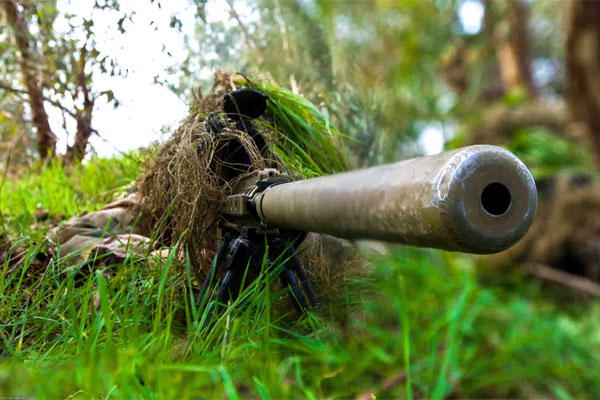The U.S. Army wants to buy a clip-on thermal sight to help snipers see through heavy fog or sand storms to find and kill their targets.
Army Contracting Command issued a March 17 draft solicitation to rifle-optics makers for the Family of Weapon Sights – Sniper, or FWS-S. The system will need to be a lightweight, self-contained, battery operated, thermal imaging system for surveillance and target acquisition that's designed to work with the M107 Long Range Sniper Rifle, M110 Semi-Automatic Sniper System, M2010 Enhanced Sniper Rifle, and the Precision Sniper Rifle, according to the document.
"The FWS-S will be a critical enabler that will allow the sniper to detect, observe and engage targets in low light, adverse weather, and limited visibility conditions with minimal or no interruption or impact on the sniper's normal daylight tactics," according to the document.
The concept is similar to the Army's AN/PVS-30 Clip-on Sniper Night Sight since it is designed to be mounted in front of the day optic sight on the M110 SASS and the M2010 ESR. The Army also has the AN/PAS-13(V)3 Heavy Weapon Thermal Sight for the M107 LRSR.
Companies interested in participating in the FWS-S have until April 30 to respond to Army Contracting Command.
The clip-on FWS-S, will be mounted "in-line with the sniper's day sight enabling the sniper to engage targets accurately at distances equal to the weapon's maximum effective range in all light levels and obscured environments," according to the draft solicitation. This way, sniper's will not have to worry about their day-sight zero because the day sight is never removed from the weapon.
The thermal sight will have a remote control that allows users to adjust the weapon sight functions, including the motorized objective lens focus, according to the document. This will give the sniper access to his controls for optimizing the thermal imagery without coming out of a firing position.
The FWS-S will also provide a modified eyepiece or separate display for operation in handheld mode and will be capable of wirelessly receiving and displaying data from Army laser range finders.
The new effort joins several other Pentagon programs to enhance the effectiveness of snipers over the last few years.
The Army included $2 million in its proposed fiscal 2016 budget for the Compact Semi-Automatic Sniper System program. In June 2014, the Army released a request for proposal to invite gun companies to build compact versions of the service's 7.62mm M110 Semi-Automatic Sniper System.
The CSASS program is "intended to more effectively execute a broad spectrum of missions than the M110 Semi Automatic Sniper System," according to the RFP. The compact system will feature improved reliability, improved accuracy, and improved ergonomics, according to the solicitation. It will also be shorter, lighter and have improved optics, trigger and bipod.
Last year, the Pentagon's Defense Advanced Research Projects Agency conducted the first successful live-fire tests of the first-ever guided, small-caliber bullet. The Extreme Accuracy Tasked Ordnance program, known as EXACTO, is being developed to revolutionize rifle accuracy, program officials maintain.
The system combines a maneuverable bullet and a real-time guidance system to track and deliver the projectile to the target, allowing the bullet to change path during flight to compensate for any unexpected factors that may drive it off course, officials say.
-- Matthew Cox can be reached at matthew.cox@military.com





























